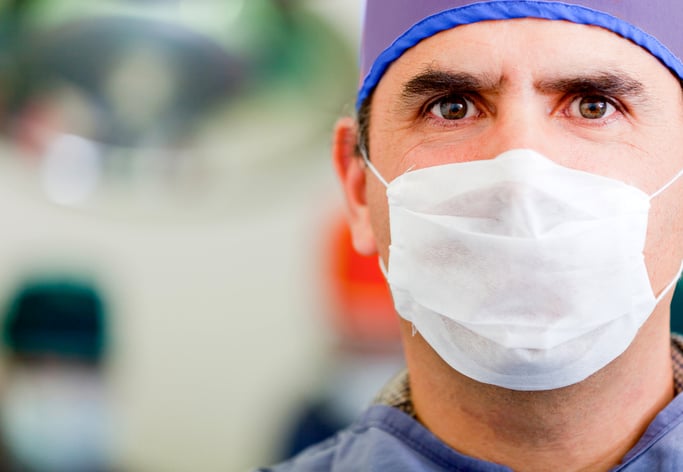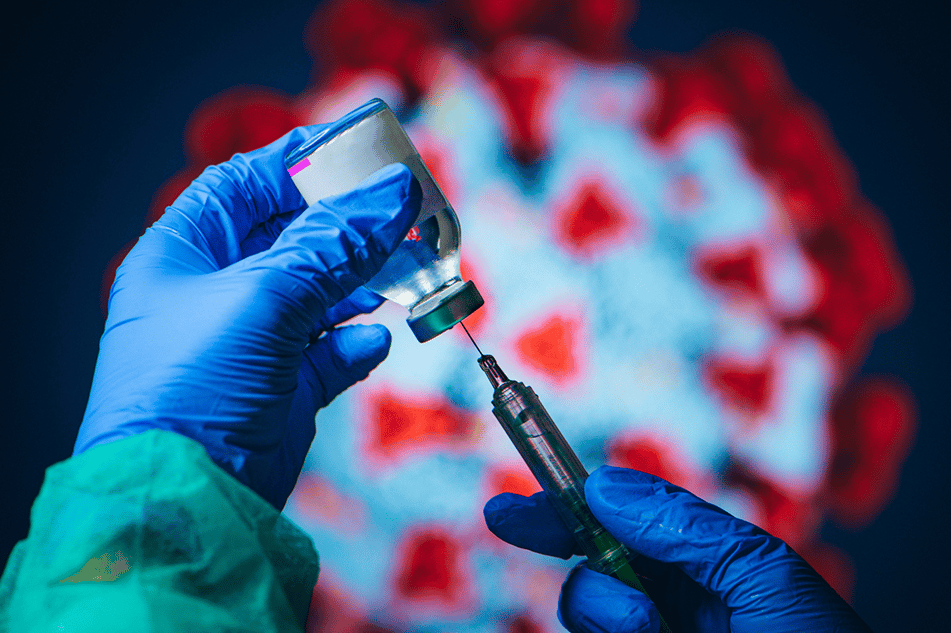Share this
identification of natural SARS-CoV-2 in vaccinated workers
by James Rudge, PhD, Technical Director, Trajan on May 30, 2022 9:00:00 AM
A brief report by Ryan T. Demmer et al at the University of Minnesota, Minneapolis published in the February 2022 issue of Mayo Clinic Proceedings reported on a study measuring both raised spike and nucleocapsid protein antibodies from blood microsamples collected remotely using Mitra® devices with VAMS® technology.
The paper is entitled “Identification of Natural SARS-CoV-2 Infection in Seroprevalence Studies Among Vaccinated Populations.” It describes a serological study of 81 healthcare workers (HCWs) before and during a COVID-19 vaccination program.
The study team was able to conclude that raised antibodies to the nucleocapsid protein was an accurate predictor of recent infection among a population of vaccinated HCWs. The team stated that these findings suggest that in the era of COVID-19 and SARS-CoV-2 vaccination, “seroprevalence studies monitoring natural infection will require assays that capture reactivity to the nucleocapsid protein.”
The Current Outlook on SARS-CoV-2 Prevalence Around the World

As of the May 2022, there have been more than 6 million deaths worldwide from COVID-19, with approximately 1 million of these in the United States alone. However, an April 2022 study by the Commonwealth Fund stated that COVID-19 vaccinations in the US saved over 2 million American lives, prevented 17 million hospitalizations and 66 million SARS-CoV-2 infections, and also saved $900 billion in associated healthcare costs.
Indeed, at the time of writing, 11.7 billion doses of the vaccines had been administered worldwide. Sadly, the statistics for low-income countries were not as positive, with less than 16% of these populations having received only one dose or more.
With their relatively high vaccination rates, many higher income countries are returning to normal life and beginning to learn to live safely with COVID-19 in their populations. This allows researchers to continue conducting serological and related studies of the virus and its prevalence.
In these studies, it is important to differentiate antibodies raised as a result of vaccination compared to antibodies raised as a result of natural infection. The work outlined by Ryan T. Demmer et al showed that measuring raised antibodies to nucleocapsid antigen, and comparing this to spiked antigen, was a reliable method to distinguish naturally raised antibodies from those raised by vaccination.
The reason for this is that the current SARS-CoV-2 vaccines target the spike protein only, so upon vaccination individuals do not raise antibodies to the nucleocapsid protein, only the spike. In contrast, when individuals are infected by SAR-CoV-2, their immune systems respond by raising antibodies against many of the viral proteins, including spike and nucleocapsid.
SARS-CoV-2 Study Methods
- Volunteers (N=81) were enrolled into 2 rounds of seroprevalence separated by 1 month (Nov 2020 and Jan 2021).
- Samples were self-collected at home using 10 µL Mitra devices with VAMS.
- Round 1 collection was between November 22, 2020 and December 18, 2020.
- All participants had not been vaccinated at the Round 1 stage.
- Only spike protein was measured.
- Round 2 collection was between December 26, 2020 and January 8, 2021.
- Vaccinations had begun in this round.
- Both spike and nucleocapsid were measured.
- Two assays from Quansys Biosciences were used to measure the following:
- Spike protein, Q-Plex SARS-CoV-2 Human IgG (4-Plex) for measuring both the S1 and S2 subunits of the spike protein.
- Nucleocapsid protein
- For round 1, infection was classified as a positive result from the round 1 spike assay, or if the volunteer reported that they had been infected.
- For round 2, vaccination was assessed by self-reporting and study volunteers were stratified into three cohorts based on the duration between vaccination and blood collection using Mitra devices with VAMS.
- 0 – 7 days
- 7 - 10 days
- > 10 days
- To compare the difference in vaccination and infection status, the group conducted Kruskal-Wallis tests at round 2, to analyze the median IgG response to the nucleocapsid protein. They then used a Youden value to define the cut-off point.
- They then compared spike vs nucleocapsid assays in the unvaccinated population during round 2.
SARS-CoV-2 Study Results

- The mean age of the volunteers was 40, with the majority being white females; 22.5% had comorbidities, such as diabetes and asthma.
- Round 1 seroprevalence was 9.5% (no vaccinations); by round 2, 46% of volunteers had been vaccinated.
- Comparing infected vs uninfected volunteers, both the spike and nucleocapsid IgGs were significantly raised in the infected cohort.
- Comparing vaccinated to non-vaccinated, elevated levels of raised IgG were observed for the spike protein but, as expected, vaccination did not alter the nucleocapsid levels.
- Comparing round 2 results, the nucleocapsid raised antibodies predicted infection. The AUC was 0.93 (95% CI, 0.88 to 0.99). Slightly lower values were seen for the spike protein.
- The Youden value for the nucleocapsid cut point was 0.42 with an AUC of 0.89 (95% CI, 0.82 to 0.96). This gave sensitivity and specificity values of 90% and 88%, respectfully.
- When examining the vaccinated cohort, the sensitivity of the nucleocapsid assay remained high (100%) but the specificity of the spike assay waned in respect to length of time between vaccination and testing. Indeed, at >10 days of vaccination and prior to testing, specificity of the spike assay had reduced to 0%.
Study Authors’ Discussion and Conclusions
- The group investigated an assay to measure prior SARS-CoV-2 infection in a population of healthcare workers – before and after vaccination and with or without infection.
- This was the first study of its type to be published, to the best of the authors’ knowledge.
- When volunteers had been vaccinated, nucleocapsid rather than spike was highly predictive of infection. Moreover, the nucleocapsid assay was much more specific in the vaccinated population compared to the spike assay.
- One limitation of the assay was that establishment of infection was conducted 1 month before subsequent testing. During this time, it was possible individuals could have been infected with COVID-19.
- The authors stated that there is a high value in such an assay to continue to monitor the course of the pandemic. Moreover, such a test would be useful in detecting undiagnosed SARS-CoV-2 infection, as well as assessing post-COVID complications.
Neoteryx Comments
The study by Ryan T Demmer et al demonstrated the importance of differentiating vaccination raised antibodies vs natural immunity. As the world continues to open its borders and return to what approximates “normal life” prior to 2020, the likelihood of new SARS-CoV-2 variants being transmitted will potentially increase.
The massive success of the worldwide vaccine program has, to a certain extent, put the brakes on COVID-19 in many countries. Nonetheless, governments should remain vigilant for future waves of infection.
Furthermore, new variants may emerge where current vaccines may be less effective in protecting populations.
Therefore, allowing healthcare professionals to distinguish between natural antibodies vs vaccine-raised antibodies will provide critical serosurveillance as new waves of infection occur.
Indeed, we know from the microsampling work of the US National Institutes of Health (NIH) and others, which was conducted at the beginning of the pandemic, rates of COVID-19 infection were actually a lot higher than had been predicted by antigen testing alone.
The tool developed by Ryan T Demmer et al and others will be critical to obtain accurate population serological data early to allow for early planning to help mitigate further outbreaks.
Furthermore, because samples in this study were remotely collected using Mitra devices with success, it validates how effective home sampling is in contributing to furthering our knowledge of the COVID-19 Pandemic.

This study report was summarized for our readers by James Rudge, PhD, Neoteryx Technical Director. This is curated content. To learn more about the important research outlined in this review, visit the original report published in the Mayo Clinic Proceedings.
Image Credits: iStock, Neoteryx
For more information on microsampling, visit our infectious disease resources.
You can access this microsampling report and other studies in our Technical Resource Library.
Share this
- Microsampling (206)
- Research, Remote Research (119)
- Venipuncture Alternative (105)
- Clinical Trials, Clinical Research (83)
- Mitra® Device (73)
- Therapeutic Drug Monitoring, TDM (51)
- Dried Blood Spot, DBS (39)
- Biomonitoring, Health, Wellness (30)
- Infectious Disease, Vaccines, COVID-19 (24)
- Blood Microsampling, Serology (23)
- Omics, Multi-Omics (21)
- Decentralized Clinical Trial (DCT) (20)
- Specimen Collection (18)
- Toxicology, Doping, Drug/Alcohol Monitoring, PEth (17)
- Skin Microsampling, Microbiopsy (14)
- hemaPEN® Device (13)
- Preclinical Research, Animal Studies (12)
- Pharmaceuticals, Drug Development (9)
- Harpera Device (7)
- Industry News, Microsampling News (5)
- Antibodies, MAbs (3)
- Company Press Release, Product Press Release (3)
- Environmental Toxins, Exposures (1)
- July 2025 (1)
- May 2025 (1)
- April 2025 (2)
- December 2024 (2)
- November 2024 (1)
- October 2024 (3)
- September 2024 (1)
- June 2024 (1)
- May 2024 (1)
- April 2024 (4)
- March 2024 (1)
- February 2024 (2)
- January 2024 (4)
- December 2023 (3)
- November 2023 (3)
- October 2023 (3)
- September 2023 (3)
- July 2023 (3)
- June 2023 (2)
- April 2023 (2)
- March 2023 (2)
- February 2023 (2)
- January 2023 (3)
- December 2022 (2)
- November 2022 (3)
- October 2022 (4)
- September 2022 (3)
- August 2022 (5)
- July 2022 (2)
- June 2022 (2)
- May 2022 (4)
- April 2022 (3)
- March 2022 (3)
- February 2022 (4)
- January 2022 (5)
- December 2021 (3)
- November 2021 (5)
- October 2021 (3)
- September 2021 (3)
- August 2021 (4)
- July 2021 (4)
- June 2021 (4)
- May 2021 (4)
- April 2021 (3)
- March 2021 (5)
- February 2021 (4)
- January 2021 (4)
- December 2020 (3)
- November 2020 (5)
- October 2020 (4)
- September 2020 (3)
- August 2020 (3)
- July 2020 (6)
- June 2020 (4)
- May 2020 (4)
- April 2020 (3)
- March 2020 (6)
- February 2020 (3)
- January 2020 (4)
- December 2019 (5)
- November 2019 (4)
- October 2019 (2)
- September 2019 (4)
- August 2019 (4)
- July 2019 (3)
- June 2019 (7)
- May 2019 (6)
- April 2019 (5)
- March 2019 (6)
- February 2019 (5)
- January 2019 (8)
- December 2018 (3)
- November 2018 (4)
- October 2018 (7)
- September 2018 (6)
- August 2018 (5)
- July 2018 (8)
- June 2018 (6)
- May 2018 (5)
- April 2018 (6)
- March 2018 (4)
- February 2018 (6)
- January 2018 (4)
- December 2017 (2)
- November 2017 (3)
- October 2017 (2)
- September 2017 (4)
- August 2017 (2)
- July 2017 (4)
- June 2017 (5)
- May 2017 (6)
- April 2017 (6)
- March 2017 (5)
- February 2017 (4)
- January 2017 (1)
- July 2016 (3)
- May 2016 (1)
- April 2016 (2)


No Comments Yet
Let us know what you think